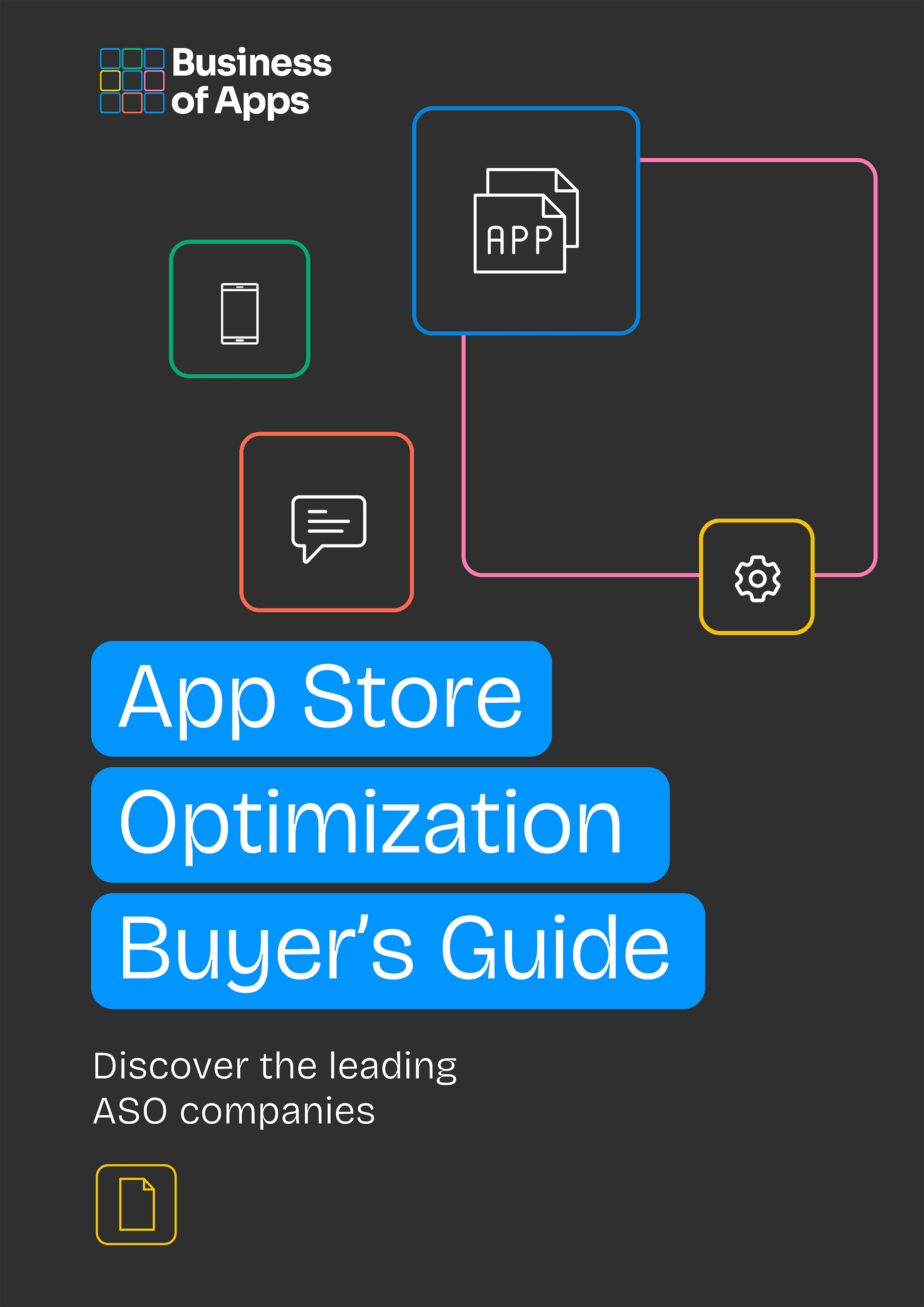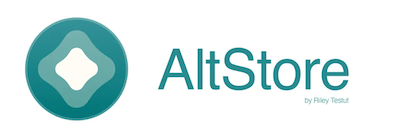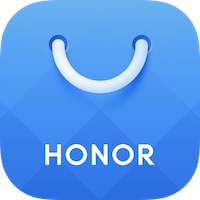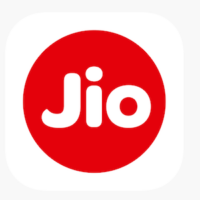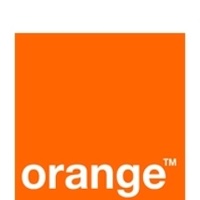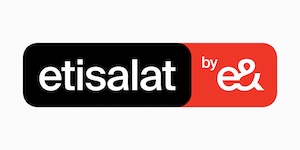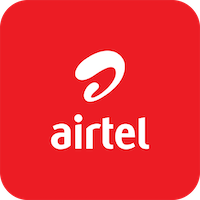
Key takeaways
-
The global app store ecosystem is dominated by Google Play (2.61M apps) and the Apple App Store (2.29M apps), but dozens of alternative stores exist across Android, iOS, cross-platform, manufacturer-specific, and operator-specific channels.
-
Alternative stores often cater to niche audiences, specific regions (like China where Google Play is banned), or particular devices (Xiaomi, Oppo, Samsung, Huawei).
-
Developers use alternative app stores to reach new audiences, bypass restrictions, or gain better revenue sharescompared to the standard 70/30 split from Apple and Google.
-
Some stores (e.g. Aptoide, Epic Games Store, Setapp Mobile) offer unique monetization models, such as subscriptions, in-app currency, or improved developer revenue shares.
-
China’s app stores (Huawei, Tencent MyApp, Xiaomi, Oppo, Vivo, Honor, etc.) collectively serve hundreds of millions of users and are essential for Android distribution there.
-
Carrier-operated stores (e.g. SK Telecom T-Store, Jio, MTN Play) survive in regions where local ecosystems, payment methods, or regulations support them.
-
Developers should evaluate audience size, device integration, monetization options, and local regulationsbefore distributing apps on alternative stores.
With this context in mind, let’s explore the landscape of alternative app stores — from Android and iOS ecosystems to cross-platform, manufacturer, and operator-specific marketplaces.
The Google Play Store for Android and the Apple App Store for iOS are the two largest distribution channels for mobile apps, offering almost global coverage to a huge potential audience. However, as competition on the two major stores has grown, developers find it increasingly difficult to achieve visibility for their apps on these app stores.
At the same time, a host of new alternative stores has proliferated. On the Android side, driven by the open nature of the platform (which allows third party app distribution) and growth of the Chinese app market, where Google Play is banned. On the iOS side, European regulations forced Apple to open up its mobile platforms for European users and in April of 2024 the first alternative iOS app store was launched, followed by several more.
These new app store environments offer a number of benefits for developers and can form an important part of an app marketing and distribution strategy.
Launching your app with these different app stores may fit your go-to-market strategy, if you want to reach a niche audience. Knowing what audience an app store caters to means developers can upload their app with confidence – there will be users that are interested in that type of app. For example, an alternative app store may focus on a specific app genre (e.g. games, utilities, business or one type of user segment).
Alternative app stores also allow targeting of national audiences – for example Tencent MyApp, Xioami Market (China), and the SK T-Store (Korea) would be key channels for Western developers and publishers seeking to access those markets. In fact, when targeting the Chinese market, there’s no choice but to use one of the Top Android app stores in China because Google Play is simply not available in this country. You can find more app distribution services and channels in our app marketing directory.
Now, alternative app stores may also offer a revenue share model that is more favorable to developers than the standard 70/30 split offered by Apple and Google Play. Some app stores may not be as generous with their revenue share model, but do offer the ability to pay for a certain amount of downloads to increase an app’s popularity, or even to buy ‘featured’ placement. This ability to access additional promotional tools is one of the key advantages of using different app stores for independent developers who may find the tight editorial control of the major stores difficult to penetrate.
App Store Optimization Buyer's Guide
Download our App Store Optimization Buyer’s Guide, covering all aspects of this essential app marketing technique to drive native traffic to your mobile app.
Alternative app stores can deliver increasingly impressive levels of downloads and user numbers if the right strategy was applied. In this guide, we’ve listed a number of mobile app stores grouped by platform, manufacturer, location and mobile operator.
A quick snapshot of the mobile app industry can be presented with the following scope of data points.
Key App Stores Data Points:
- Total number of Android apps on Google Play – 2.61 million, according to the Google Play Store Stats data
- Total number of iOS apps on the App Store – 2.29 million, according to the Apple App Store Stats data
- The biggest cross-platform app store – Aptoide with 1,000,000 Android and a small catalog of iOS apps
- The biggest manufacturer-specific app stores – Xiaomi GetApps, Oppo Software Store and Vivo App Store – 1,000,000+ apps
- Huawei AppGallery market share – 25% of the China’s Android app market (325 million of users)
- Tencent Appstore market share – 13% of the China’s Android app market (172 million of users)
- Xiaomi Market market share – 12% of the China’s Android app market (157 million of users)
So we’re starting our list with Android app stores because they presented the biggest and most diverse segment of the mobile app industry.
List of Best ASO Tools and Agencies
What are the major Android app stores besides Google Play?
With the Android mobile OS Google chose an open platform approach, permitting its apps distribution via multiple app stores. Over time, it was adopted by a number of OEMs and it lead to Android OS getting a foothold with multiple top mobile device manufacturers, among those – Oppo, Xiaomi, Huawei, Samsung and others.
Top Android app stores
| Rank | App Store | Number of apps available |
|---|---|---|
| 1 | Google Play Store | 3.5 million apps |
| 2 | Tencent MyApp (YingYongBao) | 1.0 million+ apps |
| 3 | Xiaomi Market (GetApps) | 1.0 million+ apps |
| 4 | Oppo Software Store | 1.0 million+ apps |
| 5 | Vivo App Store | 1.0 million+ apps |
| 6 | Aptoide | 1.0 million+ apps |
| 7 | Amazon Appstore | 500,000 apps |
| 8 | Huawei AppGallery | 220,000 apps |
| 9 | Samsung Galaxy Store | 150,000 apps |
Source: Statista, AppInChina, NativeX, Wikipedia, Aptoide, Amazon, Huawei, Samsung
And so let’s dive into the actual list of Android app stores that are currently operational and available worldwide (excluding China)
Which Android app stores dominate in 2025?
In terms of the number of apps available, we have 9 stores presented in the following table, with Google Play leading the list with 2.61 million Android applications as of April 2025, followed by the Tencent MyApp, Xiaomi Market, Oppo Software Store, Vivo App Store and Aptoide app store all with over 1 million Android apps available on them. Amazon Appstore, Huawei AppGallery and Samsung Galaxy Store close the table with 500,000, 220,000 and 150,000 Android apps respectively.

The Google Play Store remains the largest and most widely used Android app marketplace globally. As of early 2025, it hosts over 2.61 million apps, encompassing a vast array of categories including games, productivity tools, and educational resources. Pre-installed on most Android devices outside of China, Google Play offers robust security measures, regular updates, and a user-friendly interface. Its integration with Google services ensures seamless user experiences across devices.

Tencent MyApp (应用宝), also known as YingYongBao, is one of China’s leading Android app stores. With over 1.0 million apps, it offers a vast selection of applications across various categories. Deeply integrated with Tencent’s ecosystem, including WeChat and QQ, MyApp provides users with personalized recommendations and seamless app management.

Xiaomi Market (GetApps) is Xiaomi’s official app distribution platform, pre-installed on all Xiaomi devices. It boasts over 1.0 million apps, focusing on delivering a curated selection of applications optimized for Xiaomi’s MIUI interface. GetApps emphasizes user security and provides developers with promotional opportunities to reach Xiaomi’s extensive user base.
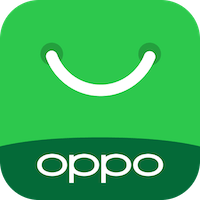
Oppo’s Software Store serves as the primary app marketplace for Oppo devices, offering over 1.0 million apps. Integrated with Oppo’s ColorOS, the store provides users with a seamless experience, featuring personalized app recommendations and stringent security measures to ensure app quality.
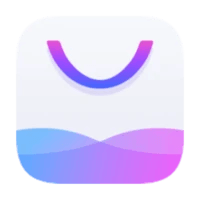
Vivo’s App Store is tailored for Vivo device users, offering a curated selection of over 1.0 million apps across various categories. The store focuses on delivering high-quality applications, with rigorous security checks and user-friendly navigation, ensuring an optimal user experience on Vivo smartphones.
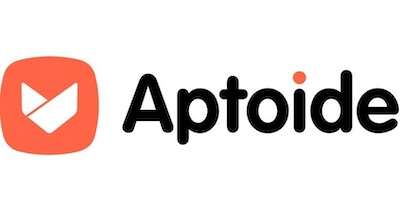
Aptoide is a decentralized Android app store that allows users to create and manage their own app stores. With over 1.0 million apps, it offers a vast array of applications, including those not available on mainstream platforms, catering to niche markets and user preferences. Aptoide emphasizes user freedom and app diversity, fostering an open-source app distribution ecosystem.
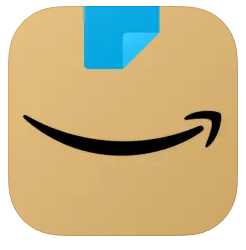
Amazon Appstore is a prominent alternative to Google Play, especially on Amazon devices like Fire tablets and Fire TV. Launched in 2011, it offers a curated selection of over 500,000 apps, focusing on quality and user experience. The Appstore provides developers with flexible monetization options and users with exclusive deals and a unique “Free App of the Day” feature.

Huawei’s AppGallery has rapidly grown, especially after Huawei devices lost access to Google services. By early 2025, it hosts over 220,000 apps, offering a wide range of applications across various categories. AppGallery emphasizes security, with a four-layer detection mechanism, and offers developers extensive support through its Huawei Mobile Services (HMS) ecosystem.

Samsung Galaxy Store is Samsung’s official app marketplace, pre-installed on all Galaxy devices. It specializes in apps optimized for Samsung’s hardware, including exclusive themes, watch faces, and Galaxy-specific applications. While its app count is smaller compared to Google Play, it offers a tailored experience for Samsung users, enhancing device functionality and personalization.
Moving on from Android app stores to the cross-platform ones that offer mobile app users both Android and iOS apps to install.
What are the leading cross-platform app stores?
In 2025, the cross-platform app stores market is presented with the following app stores. A quite modest number of app stores that support multiple mobile app platforms is explained by the fact that normally mobile app stores represent a single platform that is built to support a software development ecosystem, such as Apple’s or Google’s one. Single app development platform-focused app stores is where adoption is big is and the biggest profits are generated.
Top cross-platform app stores
| App Store | Approximate Number of Apps | Focus Area | Android support | iOS support |
|---|---|---|---|---|
| Bemobi Mobile Store (former Opera Mobile Store) | 200,000 apps | General apps & games | Yes | Yes |
| Kongregate | 30 games | Mobile games | Yes | Yes |
| itch.io | 1,000,000 games (browser & APK) | Indie games | Yes (APK + web) | Yes (web) |
| Aptoide | 1,000,000 (Android), small catalog (iOS) | Apps & games | Yes | Yes (EU only) |
| Epic Games Store (Mobile) | 300 games | Mobile games | Yes | Yes (EU only) |
Source: Bemobi, Kongregate, itch.io. Aptoide. Epic
Which cross-platform app stores are most relevant today?
Now, let’s unpack each of the stores in this table, starting with the Bemobi Mobile Store, former Opera Mobile Store.

The Opera Mobile Store, now operating under the Bemobi brand, remains a longstanding cross-platform marketplace offering access to approximately 200,000 apps and games. Originally created to serve a wide variety of mobile operating systems, it continues to support both Android and iOS users via a mobile-friendly web portal. Developers can register for a free account, allowing them to publish apps across multiple formats, including Android, Java, Symbian, BlackBerry, Windows Mobile, and iOS.
Distribution reaches over 230 countries, covering more than 7,500 device models, making it one of the most versatile platforms for developers targeting specific local markets. The store also offers promotional tools to help apps gain visibility, and it facilitates around 2 million app downloads per day globally. Opera Mobile Store (now Bemobi) remains particularly attractive for developers focused on emerging markets and niche audiences.

itch.io is a massively popular indie game platform that supports both Android and iOS users through browser-based access and direct APK downloads. Hosting over 1,000,000 games, it is the go-to marketplace for independent developers to distribute experimental, creative, and often unconventional titles. While not a traditional app store in the native app sense, itch.io’s open structure allows players to find unique games that aren’t available on mainstream platforms.

Aptoide – it’s one of the largest independent Open-Source Android app stores globally, with around 1 million apps available on it. The store has over 430 million users across more than 200 countries. In response to the European Union’s Digital Markets Act, in 2024 Aptoide launched an alternative app store for iOS users in the EU, marking a significant expansion beyond Android devices. One of the best ways to monetize Android apps – In-app purchases – are facilitated by AppCoins Wallet – the integrated digital currency.
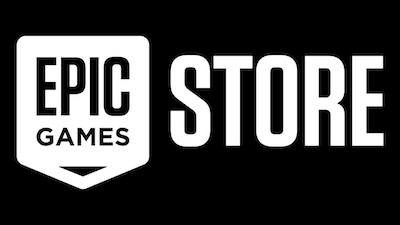
Epic Games Store expanded into mobile in 2025, offering a curated selection of around 300 high-quality games across Android and iOS (currently limited to EU iOS users). Built on Epic’s massive brand power from titles like Fortnite, the mobile store aims to challenge traditional distribution models by offering better revenue shares for developers and more freedom for gamers, particularly in the premium and free-to-play gaming categories.
Switching from cross-platform to the app stores that host exclusively iOS apps, on top of the original Apple’s iOS App Store.
What iOS app stores exist beyond Apple’s App Store?
For years, in a sharp contrast with the Google’s Android open model, Apple Inc. had a closed, moderated mobile app ecosystem. That implied having a single app store only – the App Store, by April of 2025 it boasts 2.29 million iOS apps.
In 2022, the Digital Markets Act (DMA) was released, and in May 2023, the company had to comply with its ruling. Apple was forced to open up its mobile app ecosystem in March 2024. The act requires Apple to allow its mobile device customers to use alternative app stores in the European Union. This development lead to the launch of several third-party iOS app stores in Europe, the biggest of those are presented below.
Top iOS app stores
| App Store | Approximate Number of Apps | Focus Area |
|---|---|---|
| App Store | 2.29 million | Games and non-games |
| Skich Store | 50 - 100 games (expanding) | Games |
| Setapp Mobile | 30 apps at launch | Curated productivity and utility apps |
| AltStore / AltStore PAL | 10 - 15 apps (plus community sources) | Emulators, system utilities, niche productivity apps |
Source: Altstore, TheVerge, Skich.io, TechCrunch, Setapp, MacPaw and MacRumors
Which alternative iOS app stores are available in 2025?
As of April 2025, the list of alternative iOS app stores looks as the following.

The Apple App Store is the official digital distribution platform for iOS apps, launched by Apple Inc. in July 2008 alongside the release of the iPhone 3G. It remains the dominant marketplace for iOS devices, including iPhones and iPads, as well as watchOS apps for Apple Watches and tvOS for Apple TVs. As of early 2025, the App Store hosts approximately 2.29 million apps, covering a wide range of categories such as games, productivity, education, health, and entertainment. All apps must undergo Apple’s rigorous review process to ensure security, privacy, and quality standards are met. The App Store operates under a tightly controlled ecosystem, requiring developers to adhere to specific design, monetization, and security guidelines.
Despite regulatory pressures in regions like the European Union, it continues to be the most influential and profitable mobile app marketplace in the world, serving over 650 million weekly visitors globally.
AltStore is an alternative iOS app marketplace developed by Riley Testut, originally designed to allow users to sideload apps without needing to jailbreak their devices. It operates by refreshing apps every 7 days through a local server on a Mac or PC, using Apple’s developer tools. AltStore became widely known for offering apps like Delta (a multi-console Nintendo emulator) and Clip (a clipboard manager), which could not be distributed through Apple’s App Store due to policy restrictions.
In 2024, a new version called AltStore PAL launched specifically for the EU, complying with the Digital Markets Act (DMA) rules allowing alternative app marketplaces on iOS. AltStore PAL eliminates the 7-day refresh requirement and allows direct installation of apps without a computer. Although the number of available apps is still small (around 10–15 core apps plus third-party community sources), AltStore focuses on offering powerful system utilities, emulators, and open-source tools that Apple typically does not permit.

Launched in early 2025, Skich Store is a new alternative iOS app marketplace, focused specifically on mobile games. Created by the team behind the Skich app recommendation engine, Skich Store is designed to offer a curated selection of mobile games outside the traditional Apple App Store, particularly targeting indie developers and mid-sized studios. At launch, the store offered approximately 50–100 games and is actively expanding its catalog throughout 2025.
Skich Store operates only in the European Union, taking advantage of the Digital Markets Act’s provisions allowing competition on iOS. Its goal is to create a gamer-centric marketplace that allows more flexible monetization models and faster publishing cycles compared to Apple’s strict guidelines. The Skich Store is accessible through its own app, and developers are encouraged to bring games that might not fit Apple’s App Store model, offering greater freedom in game design and marketing.
Setapp Mobile, developed by MacPaw, launched in early 2025 as a subscription-based app store exclusively for iOS devices in the European Union. Based on the success of Setapp for Mac (a “Netflix for apps” subscription model), Setapp Mobile offers users access to a curated catalog of high-quality productivity, lifestyle, and utility apps. At launch, Setapp Mobile included about 30 apps, with plans to expand gradually throughout the year.
Unlike traditional app stores that focus on app-by-app downloads, Setapp Mobile offers access to its entire catalog through a single monthly subscription. The platform emphasizes privacy, no in-app ads, and predictable costs, appealing particularly to professional users and tech-savvy audiences. Although Android support is planned later, as of 2025 Setapp Mobile operates purely for iOS, capitalizing on the EU’s new regulatory landscape to offer an alternative to Apple’s App Store.
Next up are app stores launched an maintained by companies that manufacture mobile devices.
What are the main manufacturer-specific app stores?
Back in 2008, Apple Inc. brought to the tech world a new model for software distribution – an app store. Fast forward, today all major OEMs (aka original equipment manufacturers) have their own app stores to have a control over an ecosystem them build to keep their customers in and beat competition.
Top Manufacturer-specific app stores
| App Store | Manufacturer | Approximate number of apps | Focus area |
|---|---|---|---|
| Huawei AppGallery | Huawei | 220,000 apps | General apps & games (HMS) |
| Samsung Galaxy Store | Samsung | 150,000 apps | Samsung-optimized apps, themes, wearables |
| Xiaomi GetApps | Xiaomi | 1,000,000+ apps | General apps for MIUI devices |
| Oppo Software Store | Oppo | 1,000,000+ apps | General apps for ColorOS |
| Vivo App Store | Vivo | 1,000,000+ apps | General apps for FuntouchOS |
| Honor App Market | Honor | 120,000 apps | Apps compatible with MagicOS (post-Huawei split) |
Sources: Huawei, Samsung, Oppo, Vivo, Honor
Which OEM-run app stores matter for developers?
While none of these stores come close in scale to the Apple’s App Store and Google’s Google Play, these companies’ app stores serve millions of Samsung, LG, and Lenovo smartphone owners as the primary platform for downloading and installing apps once they acquire their devices.

Huawei AppGallery is Huawei’s official app store, launched globally after the U.S. sanctions in 2019 forced the company to move away from Google Play. As of 2025, it offers around 220,000 apps, focused on supporting Huawei Mobile Services (HMS) instead of Google Mobile Services.
AppGallery is available in over 170 countries and has become one of the top three app stores globally by user base. It features apps across all major categories and offers extensive developer incentives to port apps to HMS. It also includes regional recommendations, app security screening, and quick update tools to support global and local developers alike.

The Samsung Galaxy Store is the official marketplace for Samsung devices, offering around 150,000 apps tailored for Galaxy smartphones, tablets, smartwatches, and Smart TVs. The store includes exclusive content such as Galaxy themes, fonts, camera plug-ins, and watch faces for Wear OS and Tizen-powered devices.
While general-purpose apps are still available, the store emphasizes Samsung-optimized experiences and works as a secondary source alongside Google Play on Samsung phones. It is especially important for users in the Samsung ecosystem who want device-specific enhancements and stylus-compatible apps.

GetApps is Xiaomi’s proprietary app store, pre-installed on MIUI devices and available in multiple regions including India, Southeast Asia, and parts of Europe. It hosts over 1,000,000 apps, positioning it among the largest Android app stores globally. GetApps focuses on user acquisition campaigns, localized recommendations, and seamless integration into Xiaomi’s ecosystem.
Xiaomi also operates a developer console offering monetization tools and targeted promotional campaigns. While it works alongside Google Play in most markets, GetApps is often the go-to source for Xiaomi-exclusive features and updates in China.

The Oppo Software Store is the default app marketplace for Oppo smartphones running ColorOS. With a catalog of over 1,000,000 apps, it offers a full suite of mobile content including apps, games, and tools localized for Chinese and Southeast Asian markets. The store is optimized for Oppo hardware and often features device-specific recommendations, custom wallpapers, and exclusive app deals. It includes a developer portal that supports direct APK distribution, monetization options, and cross-promotion through Oppo’s wider ecosystem (including Realme and OnePlus in certain markets).

Vivo’s App Store, integrated into its FuntouchOS platform, provides users with access to over 1,000,000 apps tailored for Vivo smartphones. Like its counterparts from Oppo and Xiaomi, it emphasizes localization, promotional tools, and hardware integration. The store offers fast updates, region-specific content curation, and strong security measures. Vivo also engages with developers through its own SDK and distribution programs, especially for China, India, and Southeast Asia, where it maintains a strong user base.
The Honor App Market emerged as a separate entity after Honor’s split from Huawei in 2020. It now serves as the official app store for Honor smartphones, which run MagicOS, an Android-based system. As of 2025, it hosts around 120,000 apps and supports both legacy HMS-based apps and newer Google-compatible apps where allowed. The store focuses on lightweight, responsive app experiences and region-specific curation. It also serves as a key component in Honor’s strategy to maintain independence from Huawei while still offering a rich app ecosystem.
Switching gears, from platform-based mobile app stores to geo location-based ones.
Thanks to two factors – Google Play is banned in China and the leading OEMs (aka Original Equipment Manufacturers) are located in China and South Korea, the Chinese app stores deserve a close look in a dedicated section that follows.
Why are Chinese app stores critical for app distribution?
Thanks to rapid economic growth and equally rapid mobile technology adoption, China’s mobile market has become a significant player in today’s global mobile app economy. In the fall of 2016, China surpassed the United States in terms of App Store iOS app revenue. In the Android sector, when Google Play Market is banned in China, Chinese local giants like Huawei, with its Huawei AppGallery marketplace that currently holds 25% of the Android OS market in China, Tencent, with its Tencent MyApp, holds 13%, and hardware giant Xiaomi, with its Xiaomi App Store, holds around 12%.
Top App Stores in China
| Rank | App Store | Market Share | Number of MAU |
|---|---|---|---|
| 1 | Huawei AppGallery | 24.85% | 325 millions |
| 2 | Tensent MyApp | 13.15% | 172 millions |
| 3 | Xiaomi Market | 12.02% | 157 millions |
| 5 | Vivo App Store | 10.54% | 138 millions |
| 4 | Oppo Software Store | 11.09% | 145 millions |
| 6 | Honor App Market | 7.43% | 97 million |
| 7 | 360 Mobile Assistant | 3.84% | 50 million |
| 8 | Samsung App Store | 3.24% | 42 million |
| 9 | Baidu Mobile Assistant | 3.20% | 42 million |
| 10 | Wandoujia | 0.94% | 12 million |
Source: Source: AppInChina, Huawei Central, Wikipedia, NativeX blog, Statista reports
Which are the top 10 app stores in China?
The top 10 Android app stores in China chart currently looks like this.

Huawei AppGallery is Huawei’s official app marketplace, rapidly expanded after U.S. sanctions cut the company off from Google services in 2019. As of 2025, it is one of China’s largest app stores, with approximately 325 million monthly active users and over 24% market share. AppGallery offers a broad catalog of around 220,000 apps, covering games, productivity, education, health, and social categories, all deeply integrated with Huawei Mobile Services (HMS). It emphasizes security, with a four-layer review process, and supports both Chinese and international developers looking to reach Huawei device owners globally.

Tencent MyApp, also known as Yingyongbao, is Tencent’s massive Android app store, especially strong in gaming and social apps. Hosting over 1 million apps and reaching around 172 million MAUs, it benefits from deep integration with Tencent’s ecosystem, including WeChat, QQ, and popular mobile games like Honor of Kings and PUBG Mobile. MyApp offers curated app recommendations, in-app promotion services for developers, and a large inventory of exclusive Tencent apps and partnerships, making it a powerhouse for app distribution in China’s mobile economy.

The Xiaomi App Store, marketed internationally as GetApps, is Xiaomi’s proprietary marketplace built into its MIUI Android system. With over 1 million apps and approximately 157 million MAUs, it offers a full suite of Android applications, particularly optimized for Xiaomi smartphones and tablets. GetApps provides localized content, incentives for first-time downloads, and supports flexible monetization models for developers, including in-app purchases and rewarded ads. It plays a central role in Xiaomi’s broader ecosystem strategy across Asia, Europe, and Latin America.

The Oppo Software Store serves Oppo’s Android devices (ColorOS) and boasts over 1 million apps. With 145 million monthly users, it is one of the largest manufacturer-tied stores in China. Oppo’s store is notable for its clean, user-friendly design, aggressive promotional campaigns, and strong device optimization practices. It offers developers access to exclusive launch events and pre-installation deals, helping Oppo retain a strong loyal user base, especially across Southeast Asia and India alongside China.

Vivo’s App Store caters to FuntouchOS users and supports over 1 million apps, reaching about 138 million MAUs. Similar to Oppo (Vivo is part of the BBK Electronics family), the Vivo App Store emphasizes lightweight app performance, data security, and local market adaptability. It often features exclusive partnerships with app developers, early access to mobile games, and system-level promotions for new apps. Vivo’s store is critical for its expansion strategy beyond China, especially into markets like Indonesia, India, and Thailand.
Honor App Market is Honor’s independent app distribution platform, created after its split from Huawei in late 2020. Hosting about 120,000 apps, the store targets users of MagicOS devices and adapts apps for Google Mobile Services (GMS) or Huawei Mobile Services (HMS), depending on the region. Honor App Market emphasizes fast app loading times, security, and regional content curation, positioning itself as a lighter, more flexible marketplace suitable for both premium and budget devices, especially in China, Eastern Europe, and the Middle East.
Developed by cybersecurity company Qihoo 360, the 360 Mobile Assistant focuses heavily on security-oriented apps, utilities, and general Android applications. It supports about 3.84% of the Chinese app market and maintains a strong brand presence among users concerned with device security. Though smaller than the top five stores, it is a trusted destination for antivirus tools, VPNs, privacy apps, and system utilities, catering to around 50 million MAUs.

Samsung’s localized App Store for its Android devices in China offers a smaller but specialized selection of apps, themes, and tools, primarily optimized for Galaxy devices. With around 42 million MAUs in China, it complements Google Play where unavailable and focuses on offering Samsung-specific experiences, such as Samsung Pay integrations, Galaxy Themes, and health apps. It plays a secondary role compared to Samsung’s massive global Play Store presence but remains important for Chinese Galaxy users.
Baidu Mobile Assistant, operated by China’s leading search engine Baidu, acts as a search-driven app discovery and installation platform. It integrates app recommendations with Baidu’s search results and offers secure, curated downloads for Android users. Although its influence has declined compared to earlier years, it still serves around 42 million MAUs and remains relevant for app discovery, particularly among users looking for localized services and Chinese-language apps.
Once one of China’s most prominent third-party Android app stores, Wandoujia is now a niche player following its acquisition by Alibaba in 2016. With a small but loyal user base (~12 million MAUs), it functions primarily as an app management and APK installation tool rather than a major app marketplace. Despite its reduced scale, Wandoujia remains well-known for providing APKs for older devices and versions not easily available through mainstream stores.
What are operator-run and country-specific app stores?
While many app stores run by mobile network operators have shut down in recent years, there are still a few holding strong, The factors that explain why some of them still are:
- Weak Google or Apple influence in certain countries;
- Wish of certain mobile operators to control the local mobile ecosystem (monetization & differentiation);
- Government policy or regulatory factors;
- Legacy user habits and embedded distribution.
Let’s unpack each of these, starting with the Google or Apple’s weak presence in certain countries.
Operators like MTN, Etisalat, and Bharti Airtel serve markets in Sub-Saharan Africa, South Asia, Middle East – regions where many mobile users own low-end Android phones that don’t have the Google Play store installed on them. Plus, especially the Sub-Saharan Africa region, has limited internet access which implies smartphone offline and curated experiences. Last but not least in this bucket, often in these regions app developers have access only to local payment systems that are supported by mobile carriers (that utilize it for billing mobile plans subscribers).
Next up is the local mobile ecosystem control. Operators like SK Telecom and Jio want to promote their own brands such as JioTV, JioCinema, JioMeet. These brand building includes running exclusive promotions and launch apps with preferred partners. And of course these operators aren’t fans of paying a cut to Google or Apple for hosting apps on their app stores.
It’s been only a few years since the US app market witness any government regulations with a mixed success. In contrast, in countries like China, India and parts of the Middle East, telecoms often operate under regulatory incentives to promote local platforms and alternatives to US-owned app ecosystems.
And the final piece in the puzzle is surprisingly simple – it’s about people’s habits and inertia to change it. Some mobile operator app stores (like TIM Store or Claro Apps) remain afloat simply because they are pre-installed on tens of millions of legacy SIM-based feature phones.
Wonder why other mobile operators gave up? Primarily because it’s costly to maintain an App Store and app developers simple didn’t prioritize them. That simple.
Focusing on the biggest app stores run by mobile operators in specific countries, we’re getting the following table.
Mobile Operator App Stores
| App store | Mobile operator | Country / Top regions served |
|---|---|---|
| T-Store | SK Telecom | South Korea |
| Jim App Store | Reliance Jio | India |
| TIM Store | Telecom Italia | Italia |
| MTN Play | MTN Group | Nigeria, South Africa, Ghana |
| Orange App Shop | Orange S.A. | France, Spain, Egypt |
| Claro Apps | América Móvil | Mexico, Brazil, Colombia |
| Etisalat App Store Etisalat Group | Etisalat Group | UAE, Egypt, Saudi Arabia |
| Airtel App Central | Bharti Airtel | India, Nigeria, Kenya |
Sources: SK Telecom, Reliance Jio, Telecom Italia, MTN Play, Orange App Shop, América Móvil, Etisalat App Store, Airtel App Central
Here is a brief introduction for each of these app stores.
Which operator app stores are still active in 2025?
T-Store, operated by South Korea’s largest mobile carrier SK Telecom, was one of the earliest telecom-backed app stores to gain real traction. Launched in 2009, it initially focused on Android and feature phone apps tailored for Korean users. Over time, it evolved into a broader digital content marketplace offering apps, games, music, e-books, and more, tightly integrated with SK Telecom’s billing system. While the dominance of Google Play in South Korea has limited its app distribution influence, T-Store still serves SKT’s bundled services and remains relevant for niche audiences, promotional campaigns, and carrier-exclusive digital experiences.
JioHome App Store is part of Reliance Jio’s vertically integrated digital strategy, where telecom, entertainment, and cloud services are bundled through its vast user base of over 400 million subscribers. Instead of operating as a standalone Google Play competitor, the Jio App Store functions as a curated distribution hub for Jio’s own app ecosystem, including JioTV, JioCinema, JioChat, JioMeet, and JioSaavn. Pre-installed on JioPhones (feature phones with app support) and Android smartphones sold by Jio, the store serves users with low-cost data plans, offering localized content, lightweight apps, and carrier billing in a low-ARPU environment.
The TIM Store (previously known as Cubovision and TIMvision for content) was Telecom Italia’s attempt to establish a national app and content marketplace in the early 2010s. It focused on premium services like movies, series, games, and apps bundled with TIM subscriptions. While it never fully challenged Google Play or the App Store in volume, TIM Store persists as part of a broader content and service bundle available to TIM customers. Its value today lies in device promotions, paid TV subscriptions, and Italian-specific digital services with integrated billing and support.
MTN Play is a mobile content and app marketplace serving millions of subscribers across Sub-Saharan Africa. Rather than competing directly with global app stores, MTN Play offers curated, often zero-rated, content: games, music, educational tools, and faith-based apps. The store focuses on accessibility for low-bandwidth users, often on 2G/3G networks, and enables carrier billing for micro-transactions — a vital feature in cash-based economies. Its continued relevance in Nigeria, Ghana, and South Africa is tied to MTN’s dominance in those markets and its positioning as a content gateway for underserved users.
Orange App Shop was Orange’s cross-market initiative to centralize app offerings for users in France, Spain, and across North Africa. While it no longer exists as a robust app store, Orange continues to distribute proprietary apps through its own ecosystem — such as Orange TV, Orange Cloud, and Orange Money — using native distribution methods in regions with lower smartphone penetration. The legacy of the Orange App Shop lives on in Africa and the Middle East, where it supports local content services and integrates with Orange’s fintech and mobile banking infrastructure.
Claro Apps is América Móvil’s content and app store platform used across Latin America, primarily under the Claro brand. It offers a range of premium and freemium apps, games, digital newspapers, and utility tools, all available through carrier billing. With a strong base in countries like Mexico, Brazil, and Colombia, Claro Apps focuses on driving engagement in emerging markets where many users prefer pay-as-you-go access to content instead of subscriptions. It remains integrated into the broader Claro ecosystem alongside Claro Video and Claro Música.
The Etisalat App Store serves users in the UAE and several MENA markets, acting as a localized hub for apps, games, and exclusive regional content. While not a global-scale store, it complements Etisalat’s push into digital services, offering tools related to education, health, entertainment, and government services. Carrier billing is widely supported, and the store often bundles promotions for data plans or device sales. In countries like Egypt and Saudi Arabia, Etisalat uses this store to promote Arabic-language content and apps that are often underrepresented on global platforms.
Airtel App Central was launched to serve as a gateway for affordable app discovery in regions with low digital penetration. Initially focused on India, it expanded into African markets like Nigeria and Kenya as Airtel’s user base grew. Though not a Google Play competitor today, App Central has pivoted to function more like a portal for curated content bundles, featuring education apps, mini-games, astrology, and mobile health. With support for USSD access and prepaid billing integration, it still reaches millions of users in rural and low-income areas.
What should developers know about using alternative app stores?
Today, mobile app ecosystem is dominated by iOS and Android mobile operating system duopoly. The major app stores are Apple’s iOS App Store and Google Play store from Google. Because of the Android’s ecosystem open approach, Android apps can be installed from a variety of stores, not just from the Google Play store. The recent European regulation forced Apple to open up its mobile platforms, which led to the launch of several iOS app stores in Europe. It remains to bee seen how viable those new app stores will be.
The Chinese mobile app market has become an equal rival to the US one and is on the path to leave it behind in the foreseeable future. Android app developers need to follow a smart approach of publishing their apps on multiple stores and do their homework by studying each store specifics.
Have we missed a store you believe should be on the list? Let us know! For more ways to distribute your app check our our directory of user acquisition services.


